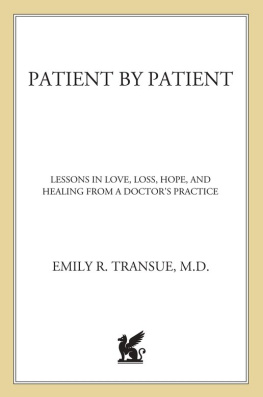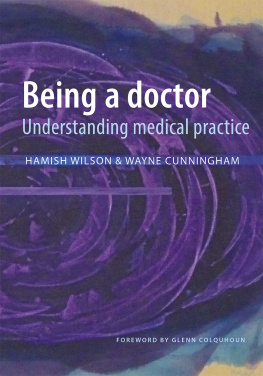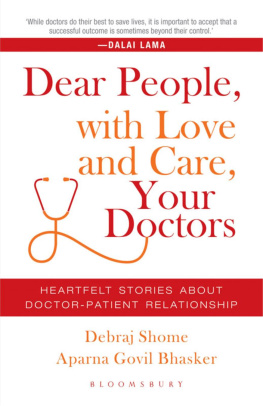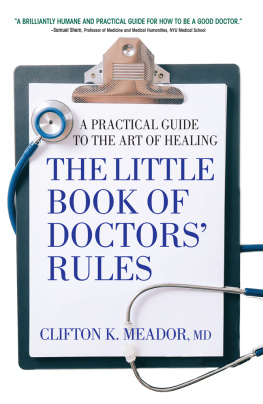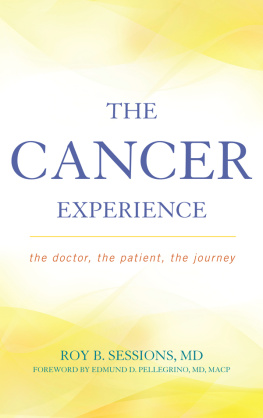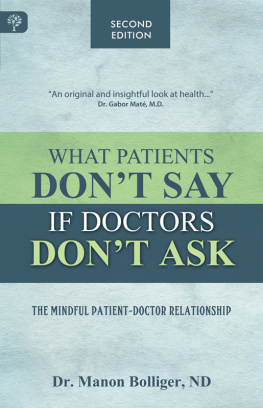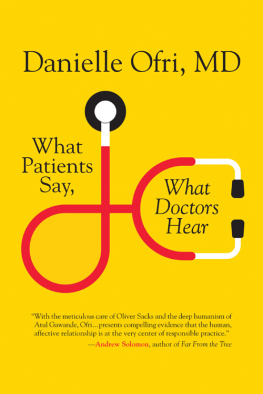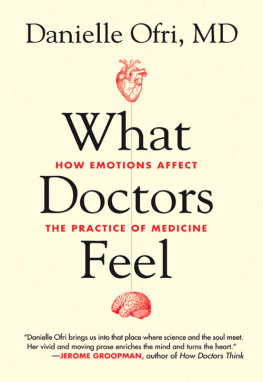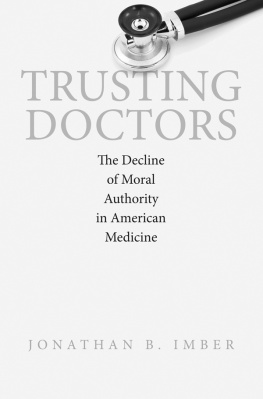DAVID MENDEL (19222007) was born in East London. He was a poor student and applied to medical school on a whim after discovering that he wasnt suited for his fathers millinery business. He contracted tuberculosis while at his first hospital job and was confined to bed for six months, after which he spent time as a ships doctor. In 1960 he was hired by St. Thomass Hospital, London, where he would stay for more than two decades, working as a senior lecturer and a specialist in cardiology. During these years he wrote the well-regarded textbook The Practice of Cardiac Catheterisation and acquired a reputation as a popular and lively teacher. Mendel retired from medicine in 1986, moving to a cottage in Kent with his wife, Margaret, and earning a degree in Italian from the University of Kent. From then until his death he occupied himself playing the flute, building furniture, and publishing essays on Italian subjects, particularly about his friend, the chemist and writer Primo Levi.
JEROME GROOPMAN is the Dina and Raphael Recanati Professor at Harvard Medical School and chief of Experimental Medicine, Beth Israel Deaconess Medical w in Boston. He has published more than 180 scientific articles, is a staff writer at The New Yorker, and most recently, the coauthor of Your Medical Mind.
PROPER DOCTORING
A Book for Patients and Their Doctors
DAVID MENDEL
Introduction by
JEROME GROOPMAN
NEW YORK REVIEW BOOKS

New York
THIS IS A NEW YORK REVIEW BOOK
PUBLISHED BY THE NEW YORK REVIEW OF BOOKS
435 Hudson Street, New York, NY 10014
www.nyrb.com
Copyright 1984 by David Mendel
Introduction copyright 2013 by Jerome Groopman
Preface to the 2013 Edition copyright 2013 by Jonathan Hazell
All rights reserved.
Cover image: Lisa Nilsson, Male Torso, 2010; courtesy of the artist
Cover design: Katy Homans
The Library of Congress has cataloged the earlier printing as follows:
Proper doctoring : a book for patients and their doctors / by David Mendel ; introduction by Jerome Groopman.
p. ; cm. (New York Review Books classics)
Reprint. Originally published: Berlin : Springer-Verlag, 1984.
Includes index.
ISBN 978-1-59017-621-4 (pbk.)
I. Title. II. Series: New York Review Books classics.
[DNLM: 1. PhysicianPatient Relations. W 62]
R727.3
616dc23
2013015560
eISBN 978-1-59017-643-6
v1.0
For a complete list of books in the NYRB Classics series, visit www.nyrb.com or write to:
Catalog Requests, NYRB, 435 Hudson Street, New York, NY 10014
CONTENTS
INTRODUCTION
O VER THE course of their careers, physicians build a library. During the early years of medical school, they acquire foundational textbooks on anatomy and physiology, pharmacology and pathology. Later, in their clinical training, they add tomes on internal medicine, pediatrics, surgery, obstetrics and gynecology, neurology, and psychiatry. If they pursue a specialty, doctors complete their collection with volumes on that field, as I did in learning hematology and oncology.
Alas, another type of book often is missing from our shelves, a book like Proper Doctoring. In it, David Mendel, a British clinician, distills an oral tradition, passed down from eminent mentors, like in a guild, where masters offer unique insights to their apprentices. Such practical wisdom is as essential to the successful care of the ill as any formula about the contraction of the heart or knowledge about the behavior of blood cells in the bone marrow.
Proper Doctoring is written from the physicians point of view, and pulls back a curtain to reveal the delicate balance clinicians seek in their art. Mendels overarching theme is medical professionalism, whose cornerstones are intellectual honesty and self-knowledge. He emphasizes that biases and preconceptions are at the root of misdiagnosis. Mendel further pinpoints the reasons that doctors may seek to be correct in their initial judgments, beyond the obvious benefit to their patients. He touches on the issue of physician ego as potentially interfering with sound thinking:
The only thing which pays dividends in the long run is getting the treatment right, and the way to do that is to get the diagnosis right, and the way to do that is to abandon your preconceptions as soon as you find they do not fit the facts. If you have made a terribly clever spot diagnosis you may be tempted to cling to it, bending the symptoms and physical signs a little to force them to fit, just for glory. But it is a mistake; proper doctoring demands total intellectual honesty. There is more than enough glory in getting it right.
Professionalism also dictates treating all patients with respect, and appreciating that the astute clinician can best uncover clues to a diagnosis by close listening to narratives. This is true even when patients express concern about the doctors time being wasted with seemingly irrelevant talk.
Patients often apologise for wasting your time. Almost invariably it is the ones who are not wasting your time who apologise, and I always strenuously deny it... The patient has no way of knowing whether he is wasting your time or not, unless he is malingering and malingerers never apologise. Indeed, the longer they talk, the more certain the diagnosis becomes, so even then the time is often not wasted.
One of my mentors, Dr. Linda Lewis, a neurologist at Columbia University Medical Center in New York, told me: There is nothing in medicine that is so complex that it cant be explained in understandable terms to every person. Its not rocket science. This places a burden on the doctor, because we become accustomed to communicating with colleagues using telegraphed jargon that is effective and efficient. But the people we care for typically lack this technical vocabulary. We then must formulate our phrases in a way that both sustains scientific accuracy and permits ready understanding. In essence, the physician becomes a translator who recasts patients experiences in their own language. But there is an even deeper significance to my mentors imperative. In order to explain a patients condition in understandable terms, the doctor must have a deep familiarity with the biology of the problem and the rationale for the offered treatment.
Mendel echoes the injunction of Dr. Lewis, emphasizing that a medical professional must learn how to explain a malady, its cause and its course, as well as the rationale for its treatment, to anyone, regardless of background or culture. This accessible explanation by the physician should never be presented in condescending tones.
Patients are drawn from the whole of the population, with its bell-shaped distribution of common-sense and intelligence. It is imperative to adjust your attitude and approach to each individual. This is not talking downwhich is unacceptable, and which betrays dreadful intellectual snobbery.... A patient who is not as bright as you are may be your superior in every other respect. If the patient is a Nobel prize winner in physics, you still have to explain to him the nature of his disease and your reasons for advising the treatment.
Similarly, the profound uncertainty that pervades much of medicine should not be hidden from patients. This means that the words the doctor uses should specify what is known and what is not known, what is clear and what is intuitive.
Our curious method of making decisions also determines what we say to the patient. As a lot of decision-making is based on guestimates, and other parts of it are the result of sensations which cannot quite be described, explanation is bound to be less than satisfactory.... Inadequate or incomprehensible explanations give no assurance. The explanation you give should aim at satisfying the patient, so that when you ask him if he has any questions, he says No thank you Doctor, you have told me all I want to know.


